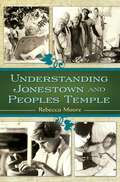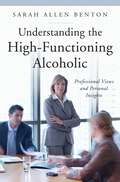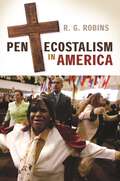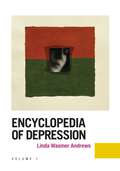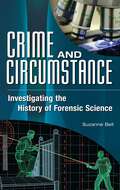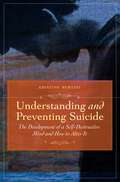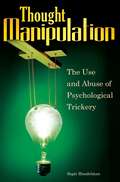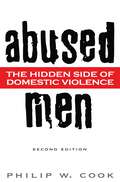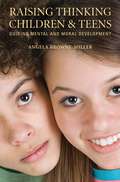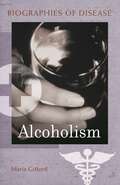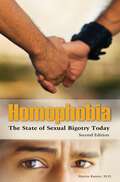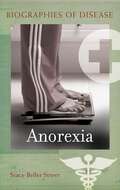- Table View
- List View
Understanding Jonestown and Peoples Temple
by Rebecca MooreThis in-depth investigation of Peoples Temple and its tragic end at Jonestown corrects sensationalized misunderstandings of the group and places its individual members within the broader context of religion in America.Most people understand Peoples Temple through its violent disbanding following events in Jonestown, Guyana, where more than 900 Americans committed murder and suicide in a jungle commune. Media coverage of the event sensationalized the group and obscured the background of those who died. The view that emerged thirty years ago continues to dominate understanding of Jonestown today, despite the dozens of books, articles, and documentaries that have appeared. This book provides a fresh perspective on Peoples Temple, locating the group within the context of religion in America and offering a contemporary history that corrects the inaccuracies often associated with the group and its demise. Although Peoples Temple had some of the characteristics many associate with cults, it also shared many characteristics of black religion in America. Moreover, it is crucial to understand how the organization fits into the social and political movements of the 1950s, 1960s, and 1970s: race, class, colonialism, gender, and other issues dominated the times and so dominated the consciousness of the members of Peoples Temple. Here, Rebecca Moore, who lost three family members in the events in Guyana, offers a framework for U.S. social, cultural, and political history that helps readers to better understand Peoples Temple and its members.
Understanding the High-Functioning Alcoholic: Professional Views and Personal Insights (The Praeger Series on Contemporary Health and Living)
by Sarah A. BentonWho is the typical alcoholic among the 12.5 million living in the United States now? Many, if not most of us when asked that question, would envision a skid row bum or someone at least out of work or with little education locked into a low-skill, low-paying job. But that is not accurate, according to the results of a national study released in June, 2007 by the National Institutes of Alcohol Abuse and Alcoholism. The NIAAA determined that alcoholics in the United States really fall into five subtypes, including nearly 20 percent who are highly functional alcoholics, well-educated with good incomes. They include corporate presidents, powerful politicians, police, lawyers, doctors, scientists, and other highly-skilled, highly-educated people who are middle- to high-income and by most accounts successful. In this unprecedented book, mental health counselor Sarah Benton takes us into the worlds and minds of so-called high-functioning alcoholics, to understand how people so intelligent and achievement-oriented get drawn into states in which they secretly cannot control their liquor consumption but still manage to excel in their careers.The book includes a look at celebrity alcoholics like singer Eric Clapton and actor/comedian Robin Williams, as well as alcoholics in high positions including Chris Albrecht, former Chairman and CEO of HBO. Other high-profile people included in this book are Miss USA 2007 Tara Conner and football legend Joe Namath. With her own story of alcoholism and her recovery woven into the text, Benton takes us into the lives and challenges of these well-educated and successful people, seeking to understand how, when, and why they became addicted, as well as the reasons their alcoholism is, for most, so hard to admit, cope with, and recover from.
Pentecostalism in America
by R.G. RobinsThis book offers a chronological and historical overview the many forms of Pentecostalism within the United States.Pentecostalism is a poorly understood theological movement, despite its recent growth in popularity as well as social and political importance. More and more Americans are encountering neighbors, friends, coworkers, and even political leaders who are aligned with one of the many varieties of American Pentecostalism. In spite of this proliferation, no complete survey of 2lst-century American Pentecostalism exists.In Pentecostalism in America, author R. G. Robins offers an accessible survey of Pentecostalism in the United States, providing a clear, nontechnical introduction and making this complex and rapidly changing movement comprehensible to the general reader. A historical approach to the topic is presented, guiding the reader through the theological, social, and liturgical variants within American Pentecostalism and its major branches, organizations, and institutions; the movement's relation to its offspring; as well as how Pentecostal groups compare to parallel movements in contemporary American Christianity.
Understanding Postpartum Psychosis: A Temporary Madness
by Teresa M. TwomeyOffering an understanding of postpartum psychosis, this riveting book explains what happens and why during this temporary and dangerous disorder that develops for some women rapidly after childbirth. Most of us are familiar with the baby blues, a passing sadness that strikes 50 to 75 percent of new mothers after delivery. And most of us understand postpartum depression, a sadness post-delivery that lingers for weeks or months for an estimated one in every 10 new mothers. But a more serious form of disorder that strikes up to one in every 500 is postpartum psychosis - triggering severe agitation, confusion, insomnia, hallucinations, delusions, mania, and possible thoughts of suicide or murder. Every year, women in the United States and around the world kill their babies, children, and themselves as a result of this mental illness. Here, author Twomey, an official with Postpartum Support International, gives us insight into the psychological, personal, medical, legal, and historical perspectives on this little-understood mental illness, which is both preventable and treatable.While most women who suffer postpartum psychosis eventually recover without harming anyone, they most often do so in silence. Paranoia is a common symptom, explains Twomey, and that moves women to hide their symptoms from everyone around them. The woman can hence appear normal, but be putting both herself and her baby at risk. We can prevent and treat this, but we need to recognize it by better screening of women postpartum, says Twomey.
Encyclopedia of Depression [2 volumes]: [2 volumes]
by Linda Wasmer AndrewsWritten in clear, nontechnical language, and filled with lively historical and cultural highlights, this comprehensive reference work is a scientifically grounded yet thoroughly readable introduction to depressive disorders.What distinguishes normal everyday emotional swings from debilitating, clinically identified depression? What are the defining symptoms, manifestations, and treatments? What is life like for people suffering from depression and for those who care for them? The Encyclopedia of Depression is for all those needing answers to questions like these—individuals, families, health professionals, or anyone fascinated by this pervasive condition.Written in clear, nontechnical language and highlighting fascinating historical and cultural perspectives on the topic, this two-volume resource presents a complete contemporary portrait of depressive disorders, summarizing the latest scientific, medical, and societal thinking on a wide variety of depression-related topics. Coverage includes causes, risk factors, symptoms, diagnosis and prevention, and a wide range of treatment options, including psychotherapy, medication, biological treatments, alternative therapies and lifestyle approaches. In addition, the encyclopedia discusses historical and cross cultural perspectives on the condition, including the dramatic shifts in public awareness and cultural attitudes toward the disease and the devastation it can cause.
Anti-Semitism: A History and Psychoanalysis of Contemporary Hatred
by Avner FalkIn the summer of 2006, the author received a message that read, Love the Nazis, and KILL THE JEWS DEAD. And that was the trigger that launched internationally known scholar Falk into work on this book. Anti-Semitism has once again become a worldwide phenomenon, growing largely during the last decade of the 20th century and the early years of the 21st. Among the spurs for this are the migration of Muslim populations and the ongoing Israeli-Arab wars. In this far-reaching and comprehensive volume, Falk delves deeply into the current events, history, and literature on anti-Semitism, integrating insights from psychology, sociology, anthropology, psychoanalysis, and political science. The result is an absorbing exploration of one of the oldest scourges of humanity, spotlighting the irrational and unconscious causes of anti-Semitism.In the summer of 2006, the author received a message that read, Love the Nazis, and KILL THE JEWS DEAD. And that was the trigger that launched internationally known scholar Avner Falk into work on this book. Anti-Semitism has once again become a worldwide phenomenon, growing largely during the last decade of the twentieth century and the early years of the twenty-first. Among the spurs for this are migration of Muslim populations and the ongoing Israeli-Arab wars. In this far-reaching and comprehensive volume, Falk delves deeply into the current events, history and literature on anti-Semitism, integrating insights from psychology, sociology, anthropology, psychoanalysis, and political science. The result is an absorbing exploration of one of the oldest scourges of humanity, spotlighting the irrational and unconscious causes of anti-Semitism.This book also features chapters on the psychodynamics of racism, fascism, Nazism, and the dark, tragic, and unconscious processes, both individual and collective, that led to the Shoah. Holocaust denial and its psychological motives, as well as insights into the physical and psychological survival strategies of Holocaust survivors, are explored in depth. There are also chapters on scientific anti-Semitism including eugenics.
Crime and Circumstance: Investigating the History of Forensic Science (Non-ser.)
by Suzanne BellToday, there is more interest in forensic science than ever before. Crime and Circumstance weaves an intriguing tale of how an obscure corner of medicine dating back to ancient times matured into modern forensic science. The author explores the scientific and social threads that created forensic science and continue to drive its evolution in an entertaining narrative that introduces readers to intriguing cases and personalities across history, countries, and cultures and helps readers translate what they encounter in popular media into the reality of forensic science and laboratory investigation.Through historical and contemporary examples, Bell illustrates how cutting-edge research migrates to forensic laboratories, a transfer that is more indirect than people might expect. Although science and the judicial system both pursue truth, the interface between them is anything but seamless. This unique historical approach focuses on personalities from scientific law enforcement and emphasizes the myriad discoveries made over the years. Through these stories, the reader is introduced to the underlying science in an interesting, lively, and accessible way.
Rewiring Your Self to Break Addictions and Habits: Overcoming Problem Patterns (Non-ser.)
by Angela Brownemiller Ph.D.Considering the many ways people seek emotional pleasure, relaxation or escape in self-harmful ways - from excessive alcohol use and drug abuse to smoking, overeating, compulsive gambling, out-of-control spending and even lesser behaviors like habitual nail-biting - there are few of us who do not have, or know someone close who has, an addiction or habit they wish they could break. The problem common to all, says author Browne-Miller, is that psychological reactions to events have motivated behaviors which, in turn, have created biochemical reactions in the brain that actually wires it for repeating the habit or addiction. In this groundbreaking book, Browne-Miller explains simply and clearly how we can control our thoughts to rewire the brain and beat the pattern that spurs repeating harmful habits, and addictions.
Will You Still Need Me?: Feeling Wanted, Loved, and Meaningful as We Age
by Angela Brownemiller Ph.D.This insightful and moving book looks at how people of various ages view the process of aging and the social and emotional perspectives it evokes.Will You Still Need Me?: Feeling Wanted, Loved, and Meaningful as We Age is a touching and incisive book organized around interviews with individuals of various ages who have responded to questions about aging. The interviewees offer their unguarded thoughts about aging with a significant other—or alone. They reveal their self perceptions, their feelings about the future, their self-image as it relates to aging, and their expectations and impressions of aging itself. They also share their concerns that with aging comes not only possible loneliness, but also meaninglessness and even uselessness.Psychotherapist Angela Browne-Miller weaves the findings into a philosophical, research-based overview of cross-generational concerns and feelings about aging. Her book opens a window into the hearts and minds of our parents, our peers, and our children as they look at the aging process and at how individuals, society, and families treat aging. Through the sensitive, up-close-and-personal, bird's-eye view of the people interviewed for this book, aging unfolds into a deeply moving experience, one we all share.
Psychology of Champions: How to Win at Sports and Life with the Focus Edge of Super-Athletes
by James J. Barrell David RybackThe first book to gather firsthand accounts of successful practices, and thinking habits, of sports legends and super-athletes—from across sports including football, baseball, basketball, boxing, golf, car-racing, and swimming—this work holds lessons that can power not only athletic success, but winning in any daily challenges of life or work. The result of years of research, Psychology of Champions offers the very personal words of star athletes who explain how they overcame such obstacles as fear, discouragement, and anxiety, and were able to move on to success. Each story—including from those of baseball great Ted Williams, basketball star Michael Jordan, football's famed Deion Sanders, and dozens more from across sports —is unique. Yet, the authors determine that, when all is said and done, the overriding variables accounting for the greatest success fall into three categories: motivation, confidence, and concentration. Barrell and Ryback spell out the rules for such success after each section in this absorbing book. The result is a book that not only entertains and educates us with firsthand accounts of ever-popular sports heroes, but also instructs athletes, amateur or professional, and arguably anyone with a goal to achieve in work or life.In-the-moment accounts reveal just what to do in various critical periods of sports competition—from being at bat in baseball, to making an instantaneous decision as a quarterback, firing the winning basket in the dying moments of a game, or launching the winning move in boxing or judo. Barrell and Ryback draw the lessons together in what they term The Focus Edge mindset. That mindset—and this book— says one former Olympian, take greatness and make it accessible to you and me.
Gender, Humiliation, and Global Security: Dignifying Relationships from Love, Sex, and Parenthood to World Affairs (Contemporary Psychology)
by Evelin LindnerAn award-winning author and transdisciplinary social scientist offers a must-read guide to paradigm change for creating a socially and ecologically sustainable future.Gender, Humiliation, and Global Security: Dignifying Relationships from Love, Sex, and Parenthood to World Affairs aims at outlining the kind of change that needs to be made if we wish to create a less crisis-prone world. This audacious work describes a vision for an alternative future, showing how new approaches to love can dignify gender relations, sex, parenthood, and leadership, and how they can guide us to a world where all citizens can live dignified lives. The book is organized in three parts. Part I, "Gender, Humiliation, and Lack of Security in Times of Transition," examines the nature of humiliation and how love and humiliation are influenced by large-scale, historical transitions such as globalization. Part II, "Gender, Humiliation, and Lack of Security in the World Today," looks at love, sex, parenthood, and leadership and how they can be dignified. Part III, "Global Security through Love and Humility in the Future," explores how love can be used to inspire psychological, social, cultural, and political strategies and to stimulate global, systemic change.
When a Brother or Sister Dies: Looking Back, Moving Forward (Non-ser.)
by Claire BermanThe trauma of losing a sibling when we are in our adult years is one of the most unrecognized and undertreated areas of psychology. There is no other loss in adult life that appears to be so neglected as the death of a brother or sister, says bereavement specialist and psychologist, Therese Rando. And Rando is just one expert author Berman interviews in this moving book about loss. We see here how, when an adult dies, the parents, spouse, and children of that person become the focus, but brothers and sisters most often fall to the sidelines and are left to find a way to deal with the grief and recover alone. Yet, when a brother or sister dies, we lose our longest lifetime companion, someone with whom we have shared an intimate family history. And, in most cases, that was someone for whom we had conflicted feelings: shared identity yet competitive feelings, pride yet jealousy, love yet hate. Most of us come to make peace with the relationship at some point. How to make peace with the death of the sibling - which can conjure up a well of feelings, from wishing you were closer to wanting to change some past events you shared - can haunt an adult. But author Claire Berman, who lost her own sister to heart disease in the week of September 11, 2001, when America lost its innocence, takes us into the emotional world of sibling loss, showing us how to understand and navigate the aftermath of a loss that can leave adults feeling angry, confused, guilty, empty, or just like Berman, wanting to hit that speed dial button still marked with her sister's name.
Understanding and Preventing Suicide: The Development of Self-Destructive Patterns and Ways to Alter Them (Non-ser.)
by Kristine BertiniEvery 18 minutes, there is a suicide attempt somewhere in the United States, with some 30,000 of those resulting in completed suicide each year. Worldwide, there are more than 1 million suicides annually. We know the basic facts: Most of the people were depressed or suffered another mental illness, and many were facing stressful life events with which they could not cope. But is there no way to prevent the tragedy? Author Kristine Bertini, a clinical psychologist, says one of the most effective means may be to understand first how suicidal tendencies and thinking develop, how environment, biology, culture, and societal factors all play a role in predisposing some people to give up hope and see death as the only way to end their suffering. In this book, Bertini explains the development of suicidal thinking and, through patient vignettes, illustrates the ways this thinking develops. She also describes and illustrates signals friends and loved ones as well as professionals can watch for pointing to such thinking, which may be kept secretive by the person at risk, as well as approaches that can be used to alter tendencies and thinking for the person at risk.
Thought Manipulation: The Use and Abuse of Psychological Trickery (Non-ser.)
by Sapir HandelmanThis thoroughly intriguing volume explains the many ways our thoughts are manipulated through temptation, distraction, misdirection, and more.From politics to sales, education, romance, and parenthood, everyone plays—wittingly or not—the roles of manipulator or manipulated. Thought Manipulation: The Use and Abuse of Psychological Trickery offers a thorough understanding of the art of manipulation, leading readers on a fascinating journey into the gray areas of ethics, politics, leadership, advertising, psychotherapy, and intimate relationships. The book explains how manipulation works, exploring morally questionable tricks, such as temptation, distraction, and misdirection and introducing manipulative strategies, both simple and sophisticated. At the same time, the author allows that manipulation is not always a bad thing as any effective change in decision-making and human behavior cannot be achieved without employing it to at least a certain degree. Manipulation operates in an infinite variety of guises and situations. Sapir Handelman explains how we can resist such effects, with a focus on ethics and freedom of choice.
Ignored, Shunned, and Invisible: How the Label Retarded Has Denied Freedom and Dignity to Millions (Non-ser.)
by J. David SmithHistorically, segregation and social isolation have been recurring responses to people considered defective or deficient in some way. And it is in the midst of such a society that special educator J. David Smith wrote this book, which presents critical historical and contemporary issues in mental retardation. Told through gripping vignettes and interwoven with the story of the life of John Lovelace, a man labeled mentally retarded as a child then institutionalized and sterilized, this gripping text will make all readers reconsider not only our social policies and practices, but also our personal actions, in relation to people with mental retardation. Topics covered here include an examination of ways people have been misidentified as having disabilities, then needlessly warehoused in institutions. Coupled with the tragic story of John Lovelace, this book is one that will be long remembered by its readers, and will ideally spur them to action. This book offers new directions for the field of mental retardation, including conceptual and terminology changes regarding intellectual disabilities, and new thinking about the people whose lives have been altered by the term and the concept.Insights from parents, friends, teachers, and varied special education experts are included, as is the strong view of author Smith, who befriended Lovelace. He was often ignored, regularly avoided and treated as less than a person, as invisible, explains Smith. And Lovelace is the metaphorical island to which each chapter here returns, a vivid example of the denial of freedom and dignity to people who bear an intellectually inferior label. In the end, we see how society can promote values that inspire and challenge us to create humane and just treatment for all, or we can just look the other way when facing disturbing human needs.
Dead-End Lovers: How to Avoid Them and Find True Intimacy
by Nina W. BrownEstablishing and maintaining a meaningful, satisfying, and enduring intimate relationship can be elusive for many people. Time and again, they are drawn to lovers with whom the relationship is futile, ending with hurt feelings and regrets. In this work, Nina Brown shares her longtime experience as a professional counselor to help those who ask: Why do I keep picking unsuitable lovers? Brown calls them dead-end lovers, and in this work she shows us, not only how to spot them early and avoid them, but also what it is—what psychological needs we have —that attracts us to them.Guided by decades of counseling those with relationship problems, Brown includes 17 clear signals of unsuitability, and tells us how to spot the five types of unsuitable lovers: Hurting and Needy, Risk-Taking and Rebellious, Charming and Manipulative, Self-absorbed, or Exotic and Different. To help us understand why we are drawn to them, she explains the personal psychological lures and attractions we may have—from Being a Saver, to Searching for Excitement, Craving Attention and Admiration, Finding a Mirror, and Rebellion against Convention. She also explains why entering into a relationship expecting to change another person is most often just an exercise in futility.Perhaps most important, Brown details how we can move ahead and find true intimacy by pinpointing the components of a satisfying and meaningful intimate relationship, increasing interpersonal effectiveness, strengthening our psychological boundaries, resisting lures, managing emotions, and becoming aware of potential personal romantic illusions.
Abused Men: The Hidden Side of Domestic Violence
by Philip W. CookAn award-winning investigative journalist provides a disturbing new look at an underreported type of domestic violence—the abuse of men.The first edition of Philip W. Cook's book, Abused Men: The Hidden Side of Domestic Violence (Praeger, 1997), drew attention and praise nationwide from individuals and from media, ranging from CNN and Fox network's The O'Reilly Factor to scholarly publications such as The Journal of Marriage and Family. On the 10th anniversary of that groundbreaking book, Cook began revising and expanding his work. The result is this second edition—a disturbing look at a trend that continues to increase.The new edition of Abused Men: The Hidden Side of Domestic Violence offers up-to-date data on the prevalence of intimate partner violence against men, incorporating personal interviews and cases drawn from the media. It also includes updates on law, legislation, court activity, social responses, police activity, support groups, batterer programs, and crisis intervention programs. The final chapter contains a detailed and specific description of needed reforms in the current approach to intimate partner violence, whether the victims are male or female.
Hypnosis and Hypnotherapy [2 volumes]: [2 volumes]
by Deirdre BarrettOnce thought pure entertainment akin to magic acts, hypnosis is now a growing field being practiced by psychologists, psychiatrists, and medical doctors. Across all ages—from children to adults and the elderly—patients are finding professional, therapeutic hypnosis can help them recover from mental maladies ranging from addiction to depression and psychosis, and from physical illnesses from chronic pain to obesity and skin disorders. Studies show hypnosis can even speed healing from broken bones, burns, and surgery. These unprecedented volumes, including some of the best-known experts in the field hailing from Harvard, Stanford and other top universities, cover the newest research and practice in this intriguing arena. Edited by a psychologist at Harvard Medical School, this set explains developments in hypnosis, from its colorful if misguided inception with Anton Mesmer, across clinical techniques developed for health care in the 20th century, to emerging research showing new potential applications to aide mental and physical health. Chapters also highlight what psychologists, neurologists, physicians, and scientists have discovered about how personality, cognition, and brain functions affect, and are affected by, hypnosis. An appendix explains how to tell the difference between an entertainer or charlatan and a practitioner who is trained, credentialed, and practicing research-backed hypnosis. Universities with hypnotherapy programs and courses are also included.
Islamic Terror: Conscious and Unconscious Motives (Praeger Security International)
by Avner FalkIndependent scholar Falk analyzes the genesis of Islamic terror from many standpoints, including religious, cultural, historical, political, social, economic and, above all, psychological. Drawing on his training as a clinical psychologist, Falk's writings specialize in psychohistory and political psychology. Here, he examines topics including infantile experience and adult terrorism, the meaning of terror, terrorists and their mothers, narcissistic rage and Islamic terror, and whether terrorists are normal people, as some scholars claim. He also describes the infantile development of terrorist pathology, non-psychoanalytic theories of terrorism, globalization's effect on terrorism, and the notion of the clash of civilizations. Other topics addressed in this reader-friendly analysis include history's first Islamic terrorists and three important cases—two recent, deadly terrorists and a primary figure in our current war on terror.Independent scholar Falk analyzes the genesis of Islamic terror from many standpoints, including religious, cultural, historical, political, social, economic and, above all, psychological. Drawing on his training as a clinical psychologist, Falk's writings specialize in psychohistory and political psychology. Here, he examines topics including infantile experience and adult terrorism, the meaning of terror, terrorists and their mothers, narcissistic rage and Islamic terror, and whether terrorists are normal people, as some scholars claim. He also describes the infantile development of terrorist pathology, non-psychoanalytic theories of terrorism, globalization's effect on terrorism, and the notion of the clash of civilizations. Examining the emotional structure of traditional Muslim families, Falk shows us the Muslim child's ambivalence toward his or her parents, ways in which Muslims abuse women and children, and the roots of Muslim rage, and why all of that plays into the development of future terrorism. Other topics addressed in this reader-friendly analysis include history's first Islamic terrorists and three important cases—two recent, deadly terrorists and a primary figure in our current war on terror.The central idea throughout the book is that a person's attitude toward terror and terrorism—as well as whether he or she becomes a murderous terrorist, or even who wages a global war on terror—has much to do with that person's own terrifying experiences in infancy and childhood. Such terror, usually experienced first in the earliest interactions with the mother, is symbolically expressed, as Falk shows, in fairy tales and myths about terrifying witches and female monsters. Further terror may be experienced in the relationship with the father and also in various other traumatic ways. It is these early terrors, when extreme and uncontrollable, that most often produce terrorists and wars on terror, Falk argues. Thus, his book focuses on the conscious, but also on the irrational and unconscious causes of terrorism.
Mysterious Minds: The Neurobiology of Psychics, Mediums, and Other Extraordinary People (Non-ser.)
by Stanley Krippner Harris L. FriedmanAn introduction to the scientific study of psychics and mediums—those who are frauds, those who are psychotic, and those whose claims seem to defy easy dismissal.Welcome to the world of Mysterious Minds: The Neurobiology of Psychics, Mediums, and Other Extraordinary People. Here, experts in the emerging field of neurobiological study make the case that while many claims of psychic ability are easily proven false, there may well be claimants who can obtain information in ways not easily explained by mainstream science—and there might be scientific tools and approaches available to confirm those experiences.Written by an expert team of distinguished investigators from a half dozen countries around the world, Mysterious Minds introduces readers to the current state of research into parapsychological experiences, emphasizing the neurobiological data obtained by those who claim to be psychics or mediums. It offers specific examples of paranormal claims of extraordinary people—claims scrutinized through the use of high-tech brain imaging, clinical neurological examinations, and psychotropic drugs. The book concludes by proposing a series of models based on fundamental neurobiology, psychology, and quantum physics that could help us unravel these mental mysteries.
Raising Thinking Children and Teens: Guiding Mental and Moral Development (Non-ser.)
by Angela Brownemiller Ph.D.In her newest book—written for both lay and professional people in all walks of life and cultures—author, lecturer, educator, Angela Browne-Miller presents a set of tools and awarenesses adults can apply to raising and teaching children and teens.Full of daily life advice, as well as profound ideas for changing the way we think about learning, Raising Thinking Children and Teens: Guiding Mental and Moral Development takes readers into the thinking processes of young people and shows how to reach them, to help them, to empower them. "Moral intelligence" is key, and Angela Browne-Miller explains how to guide young people in developing it. She likewise explores human potential and ways to raise thinking children who will maximize theirs. Examining both the folklore and the scientific debates about intelligence, she shows the danger of mislabeling and how to watch for and prevent labeling at school, in the home, and in society in general. The book also treats topics such as the quality of care and safety in school and preschool settings, effects of the physical environment on learning, the role of organization in thinking, childhood stress and hypochondria, child abuse outside the home, and family violence.
Alcoholism (Biographies of Disease)
by Maria L. GiffordAn intriguing look at the history of alcoholism and its dramatic effects, from the first fermented grape to current advances in genetic research.Alcoholism tells the story of a disease familiar to many yet not well understood. It is the first "biography" of alcohol abuse that gauges its devastating effects on the body, the family, the economy, and the community.Alcoholism provides the latest understanding of the disease as a behavioral dysfunction and a biological condition. Coverage includes the origins of alcohol and the discovery of alcoholism as a medical disease; the biology of alcoholism and its effects on the body; and current diagnostic and treatment methods for alcoholism. In addition, the book explores the effects on society of such alcoholism-related problems as domestic abuse, fetal alcohol syndrome, drunk driving, and suicide, as well as promising new directions in alcoholism research, awareness, treatment, and prevention.
Homophobia: The State of Sexual Bigotry Today
by Martin Kantor MDTen years after he first brought us the book Homophobia, which laid bare the harsh realities and harmful effects of this sexual bigotry, psychiatrist Martin Kantor delves again into prejudice and discrimination—even flat-out acts of absolute hatred—against gays in the United States. Have things changed? One might think so. Ten years ago Matthew Shephard was strung up to die on a fence because he was gay. But no such blatant hatred has made headlines here since the turn of the millennium. Ten years ago, Pat Robinson authored a book that assured lasting peace would only occur when a group including drug dealers, assassins, worshippers of Satan, and homosexuals are no longer on top. Yet, by 2007, Robinson was pledging support for pro-gay Republican presidential candidate Rudy Giuliani. And gays only longing for a formal relationship a decade ago are now entering into civil unions, even gay marriage, in states that have legalized the ceremonies. Hate crime laws have been revised to include gays, and gays are now recognized in domestic partner clauses common across insurance polices. People appear open about homosexuality in the media; gays are featured on television shows and in movies alongside straights. The advances seem great.But they are only surface advances, cautions Kantor. Because the consequences of hate crimes are a lot more severe than they used to be, gays and lesbians are being hunted down and beaten up less frequently than they once were. But people are still full of hate, just more wary of punishment so more circumspect about how they express it. In this new edition, Kantor tells in harsh detail how and why people still fire off slurs like faggot and dyke, and threaten harm, from blowing up their homes to bashing in their heads. Kantor takes us across sites in America - from city streets to hospitals, schools, broadcast stations, and churches to police departments—showing how homophobia is still very much alive. While the problem may be less acute it is still chronic, and while it may not take as many lives, it ruins perhaps even more, he explains. Homophobia is a phenomenon that in significant respects parallels mental illness, adds the psychiatrist. Education alone will not stem the homophobic tide. We also need to uncover and treat the psychoneurotic dimension of homohatred. Yes, we can admire the changes in homophobia over the last decade, but we must not forget or ignore the fact that the human beings who create homophobia haven't changed that much even over the centuries.
The Praeger Handbook of Play across the Life Cycle: Fun from Infancy to Old Age (Non-ser.)
by Luciano L'AbateThis volume shows how we play at various ages and stages, and why play is so vital to our wellbeing.Most American adults have little respect for play, for themselves or, increasingly, for their children. Are we losing anything with this attitude? Yes, says longtime clinical psychologist Luciano L'Abate. In a book that has a message for us all, L'Abate presents research showing that play, as one scholar put it, "is not a luxury, but rather a crucial dynamic of healthy physical, intellectual, social, and emotional development at all age levels." The Praeger Handbook of Play across the Life Cycle: Fun from Infancy to Old Age, shows how play and playful activities have developed and changed across recent history, and how their necessity has been the subject of changing cultural and educational views and controversies. The book overviews the history of play, summarizes current research and theory, shows how we play at various ages and stages, and explains why that helps us develop into healthy people—physically, intellectually, emotionally, and spiritually.
Anorexia (Biographies of Disease)
by Stacy Beller StryerWritten in accessible but medically accurate prose, Anorexia provides a detailed explanation of how the diagnosis of anorexia is made, common physical and personality characteristics of those affected by the illness, and both short and long-term complications. Anorexia takes the discussion a step further than similar books on the subject by placing the disease in context with a broad survey of the history of self-starvation from Antiquity to the present, and it tackles the difficult question of whether anorexia nervosa existed before the 19th century or is a uniquely modern disease. The book evaluates in detail the social, economic and cultural environments within which self-starvation has occurred historically, and it analyzes competing theories of the disease's origins—including sociocultural, developmental, biochemical, and genetic hypotheses. The book also provides coverage of several often overlooked topics, such as the incidence of anorexia among young men, and it makes use of the personal narrative of an anorexic throughout to give the reader some sense of what it feels like to have anorexia and what someone with anorexia may be thinking.
